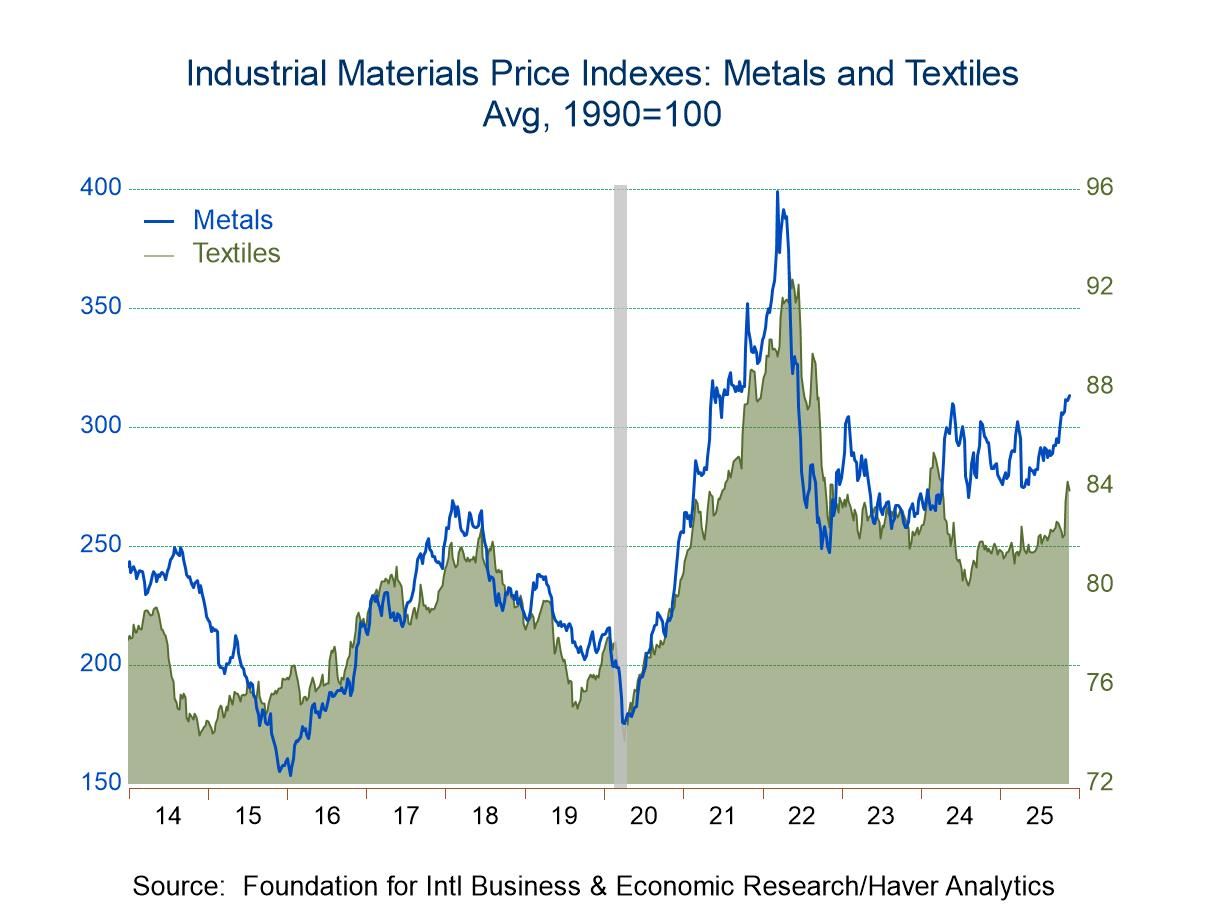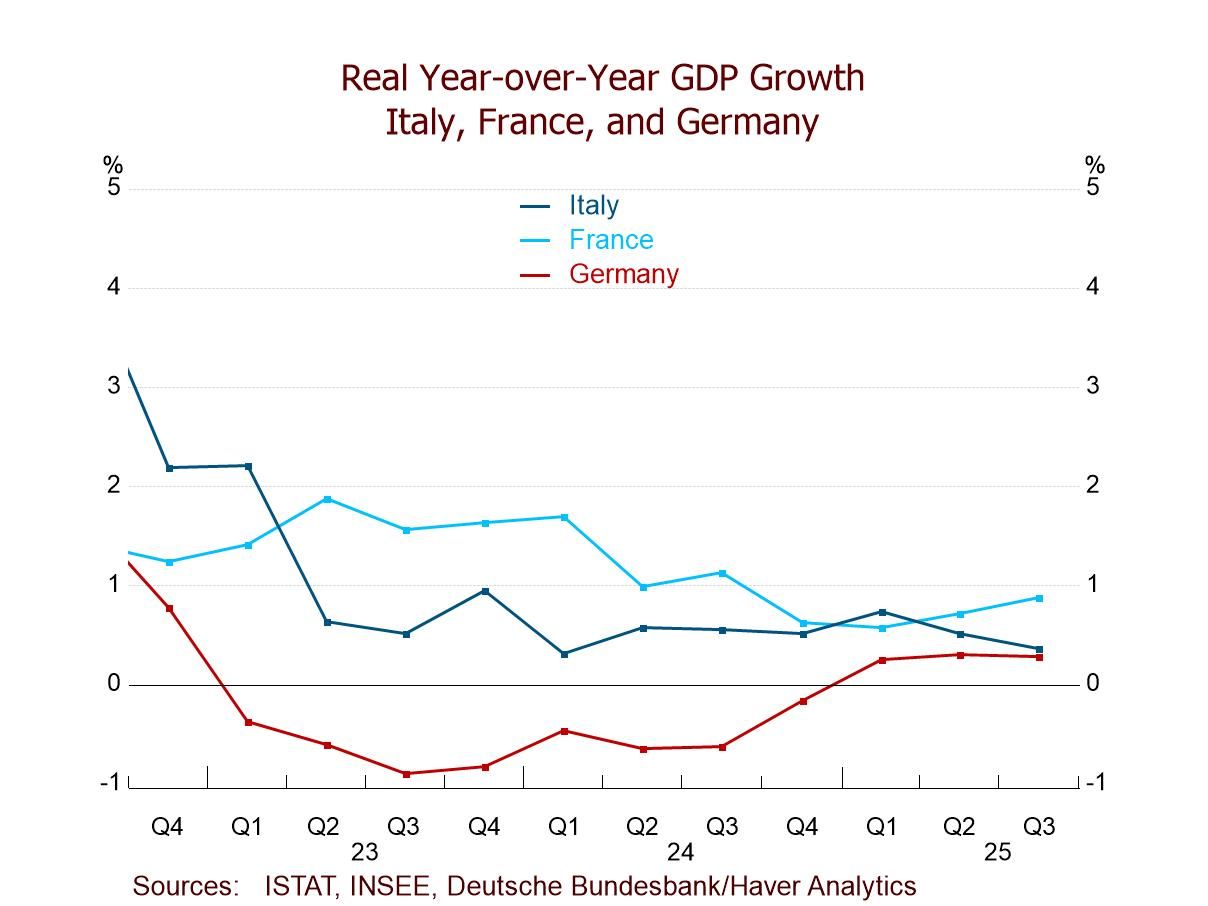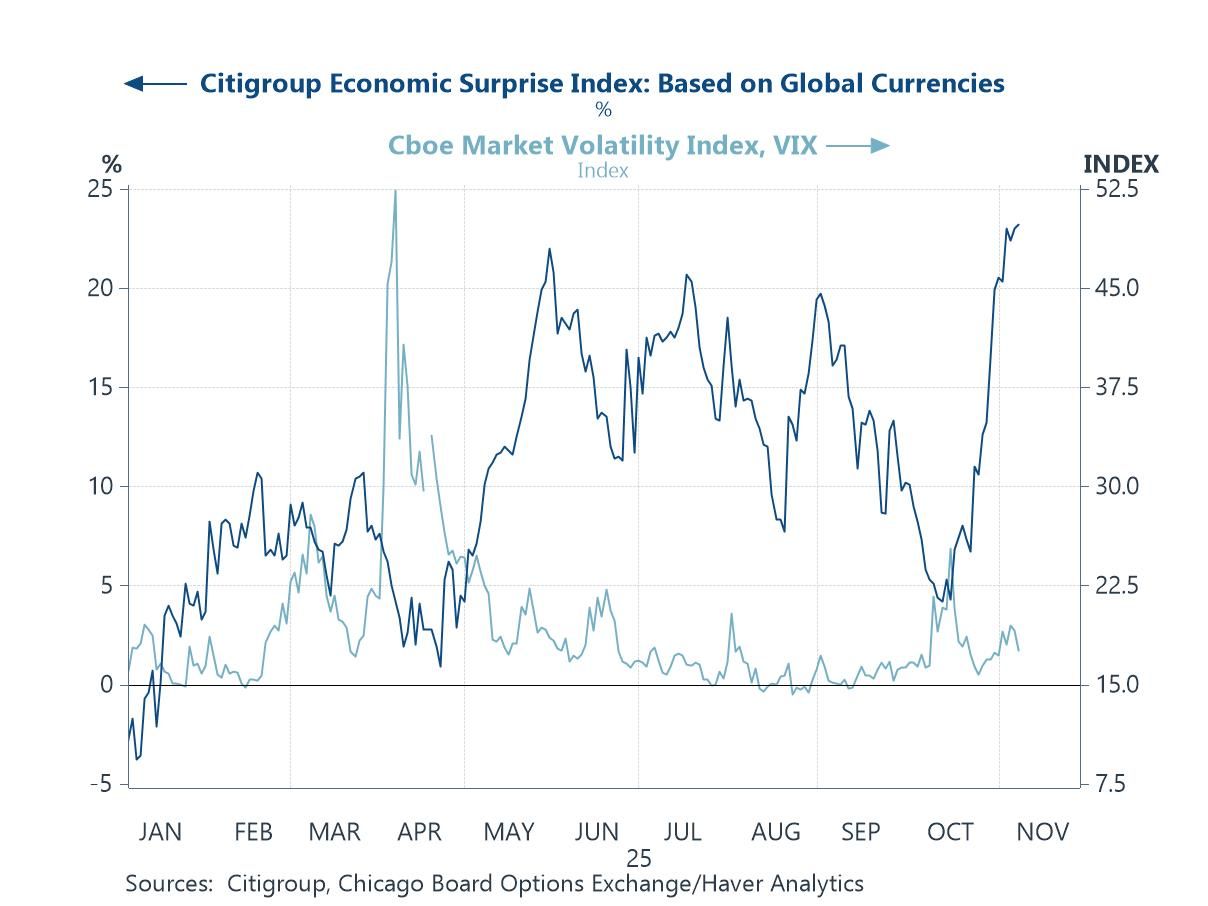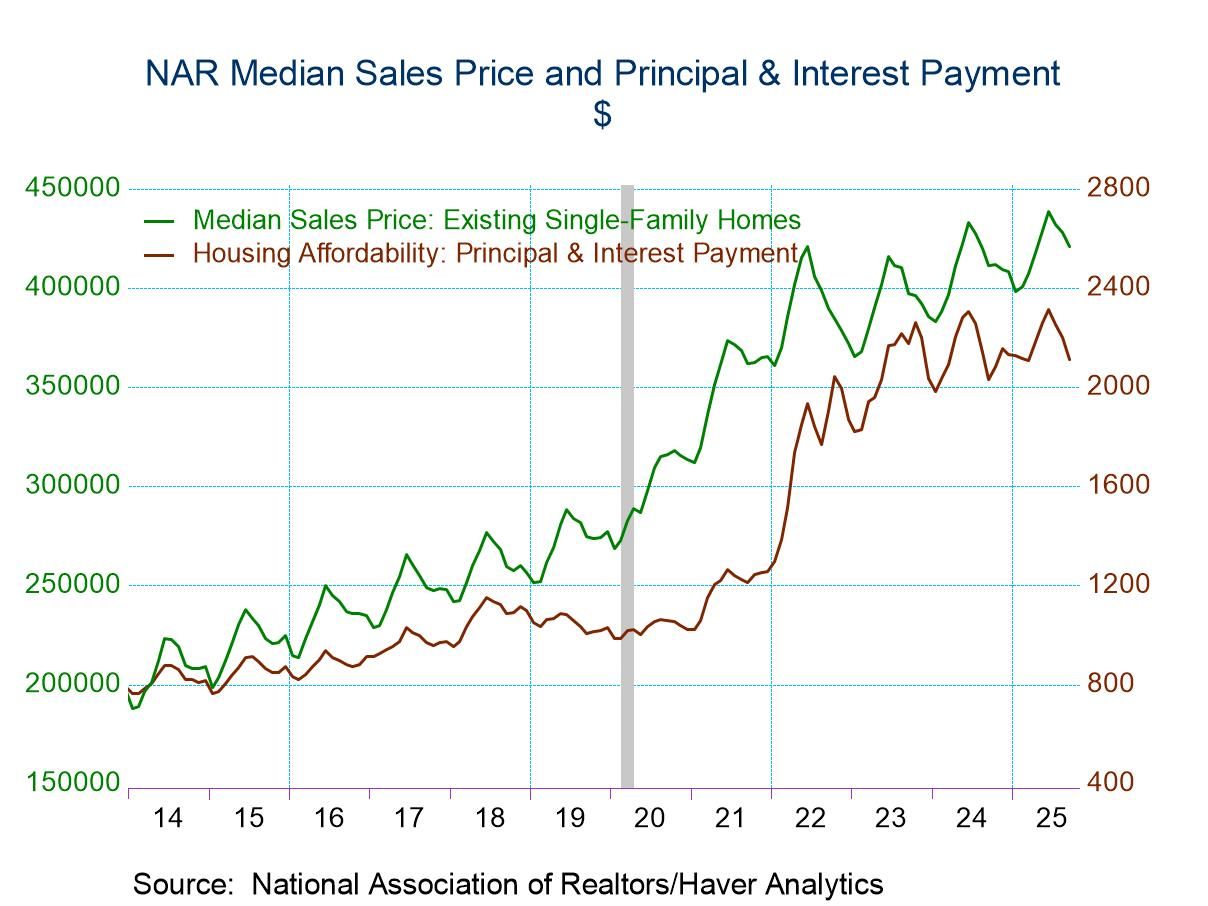U.S. GDP Growth Revised Slightly Lower in Q4’22
by:Tom Moeller
|in:Economy in Brief
Summary
- Consumer spending growth reduced but capital investment raised.
- Inventories & trade deficit improvement add to growth.
- Q4 price gain revised higher but trend remains lower.


Real GDP grew 2.7% at an annual rate (0.9% y/y) during Q4'22, revised from the advance report of 2.9% growth. It followed 3.2% growth in Q3. The latest figure compares to expectations for a 3.0% rise in the Action Economics Forecast Survey.
Faster inventory accumulation added an unrevised 1.5 percentage point to growth last quarter following a 1.2 percentage point subtraction in Q3. Improvement in the foreign trade deficit added 0.5 percentage point to growth, revised from 0.6, last quarter after a 2.9 percentage point addition in Q3. The gain occurred as exports fell 1.6% (+5.2% y/y), revised from 1.3%, after rising 14.6% in Q3. Imports weakened 4.2% (+1.8% y/y), revised from -4.6%, following a 7.3% decline.
Growth in domestic final demand slowed to a minimally revised 0.7% (+0.9% y/y) following a 1.5% Q3 rise. Real personal consumption expenditure growth of 1.4% last quarter (+1.8% y/y) was revised from 2.1% and followed 2.3% growth in Q3. Durable goods outlays fell 1.9% (+0.5% y/y), revised from 0.5% growth. Spending on motor vehicles & parts gained a downwardly revised 3.8% (-1.5% y/y), and furniture & appliance outlays declined 0.8% (-0.5% y/y), revised from a 0.4% gain. The decline in spending on recreational goods & vehicles was deepened to a 3.9% (+4.2% y/y). In the nondurable goods sector, spending rose 0.2% (-1.7% y/y), revised from 1.5%. Outlays on food & beverages eased 0.3% (-5.2% y/y), revised from a 1.1% gain, following three straight quarters of decline. Clothing outlays slipped 0.1% (+1.2% y/y), revised from a 0.8% gain while gasoline & oil expenditures rose a downwardly revised 1.1% (-3.6% y/y), also following three straight quarters of decline. Purchases of services strengthened a little-changed 2.4% (3.2% y/y) after stronger growth in the prior two quarters. Housing & utilities outlays gained 1.8% (1.4% y/y) and health care outlays increased a strengthened 5.9% (2.8% y/y), about the same as in Q3. Spending on recreation increased a steady 3.4% (4.5% y/y) while spending at restaurants & hotels rose 1.9% (5.6% y/y), the weakest rise in three quarters.


Business fixed investment rose 3.3% (4.3% y/y) in Q4’22, revised from 0.7% after strengthening 6.2% in Q3. Structures investment strengthened 8.5% (-3.3% y/y), revised from 0.4%, but had been falling since the end of 2019. Equipment investment fell 3.2% (+4.0% y/y), revised from -3.8%, reflecting an unchanged 23.3% decline (-2.1% y/y) in information processing equipment and a downwardly revised 30.4% rise (27.9% y/y) in transportation equipment. Investment in industrial equipment rose an upwardly revised 6.2% (-0.1% y/y) while investment in intellectual property products rose an upwardly revised 7.4% (8.5% y/y), remaining strong since the end of the 2020 recession.
Residential investment declined for the seventh consecutive quarter, tumbling a little-revised 25.9% (-19.0% y/y) in Q4, about the same as in Q3.
Government spending increased a little-changed 3.6% (0.8% y/y) in Q4’22, about the same as in Q3. Federal government spending surged a little-changed 5.9% (0.1% y/y) as defense spending rose 2.2% (-0.2% y/y). Nondefense outlays jumped 10.9% (0.5% y/y) following a 2.5% increase. State & local government spending rose an unrevised 2.3% (1.3% y/y) after increasing 3.7% in Q3.
The GDP chain price index increased 3.9% (6.4% y/y), revised from 3.5%, last quarter, remaining the weakest increase in two years. It was down from a 9.0% rise in Q2. The Action Economics Forecast Survey expected a 3.5% increase. The PCE price Index rose 3.7% (5.7% y/y), revised from 3.2%, after increasing 4.3% in Q3. The PCE price index less food & energy gained 4.3% (4.8% y/y), revised from 3.9%, down from 5.6% in Q1. The nonresidential investment price index rose a minimally changed 3.4% (6.6% y/y). The equipment price index improved 6.0% (7.2% y/y). The intellectual property products price index slipped 0.6% (+2.2% y/y) after firm increases in the prior six quarters. The residential investment price index rose 6.7% (12.1% y/y), the weakest increase in two years. The government spending price index rose 3.5% (6.8% y/y), also the weakest increase in two years.
The GDP figures can be found in Haver's USECON and USNA databases. USNA contains virtually all of the Bureau of Economic Analysis' detail in the national accounts. Both databases include tables of the newly published not seasonally adjusted data. The Action Economics consensus estimates can be found in AS1REPNA.


Tom Moeller
AuthorMore in Author Profile »Prior to joining Haver Analytics in 2000, Mr. Moeller worked as the Economist at Chancellor Capital Management from 1985 to 1999. There, he developed comprehensive economic forecasts and interpreted economic data for equity and fixed income portfolio managers. Also at Chancellor, Mr. Moeller worked as an equity analyst and was responsible for researching and rating companies in the economically sensitive automobile and housing industries for investment in Chancellor’s equity portfolio. Prior to joining Chancellor, Mr. Moeller was an Economist at Citibank from 1979 to 1984. He also analyzed pricing behavior in the metals industry for the Council on Wage and Price Stability in Washington, D.C. In 1999, Mr. Moeller received the award for most accurate forecast from the Forecasters' Club of New York. From 1990 to 1992 he was President of the New York Association for Business Economists. Mr. Moeller earned an M.B.A. in Finance from Fordham University, where he graduated in 1987. He holds a Bachelor of Arts in Economics from George Washington University.






 Global
Global